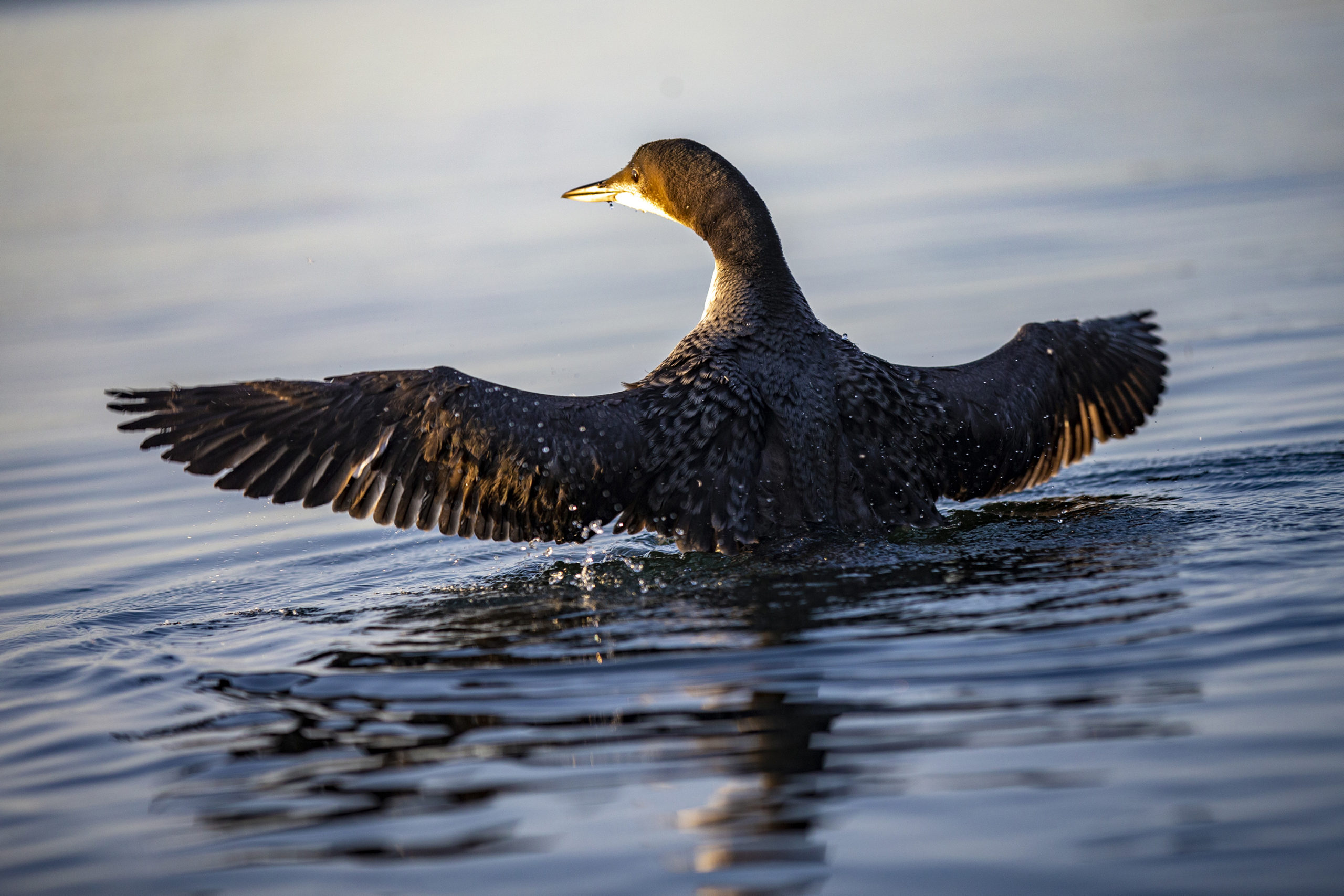To Bring Loons Back To Massachusetts, Biologists Must Convince The Birds This Is Home

The loon chick transported from Messalonskee Lake, near Belgrade, Maine, adapts to the water of it’s new home in Watuppa Pond in Fall River, Massachusetts. (Jesse Costa/WBUR)
Dave Evers kneels in the bow of a small idling motorboat, surveying the calm lake in front of him with binoculars. It’s 9:30 p.m. and with the exception of a few stars in the sky and a ring of faint cabin lights encircling the lake, it’s difficult to see anything more than a couple feet away. Luckily Evers is one of the world’s foremost loon experts, and a pro at finding the birds in the dark.
After a few minutes of searching, he sees something in the distance and whispers to the man sitting next to him, a local volunteer, to turn on the portable spotlight. The man follows Evers’ directions to slowly scan the surface of the water: “Go left. Go slower. Left. Right there, there’s one.”
The light suddenly silhouettes a small creature, and a tiny dot of light, its eye, reflects back. The 6-week-old chick they’ve been chasing for the last hour has surfaced again. It floats quietly on the water about 20 feet away.
“Hold the light, hold it still,” Evers whispers. The team doesn’t attempt captures during the day because loons dive under water as soon as they see a boat coming. At night, however, it’s possible to get close by temporarily blinding the birds with the spotlight.
Evers signals to his colleague, Chris Persico, to turn on a machine that plays bird sounds. From it comes a loud wail call, that iconic loon sound familiar to anyone who has spent time on a lake in Maine or upstate New York.
To some, the sound is beautiful and nostalgic; others find it haunting, evocative of something primordial. For Evers, it’s an auditory symbol of a well-balanced and healthy ecosystem. To a loon, however, the call is just a call; the bird-equivalent of “Where are you? I’m over here.”
Persico plays the wail again, and steers the boat so it’s facing the chick head on. Illuminated by the light, the bird is disoriented and freezes. Evers puts down the binoculars and picks up a long-handled net. He inches forward until he’s leaning a bit over the side of the boat and gives a series of short “hoots,” the whistle-like call of a young loon.
Read the rest of this story at WBUR’s website.
